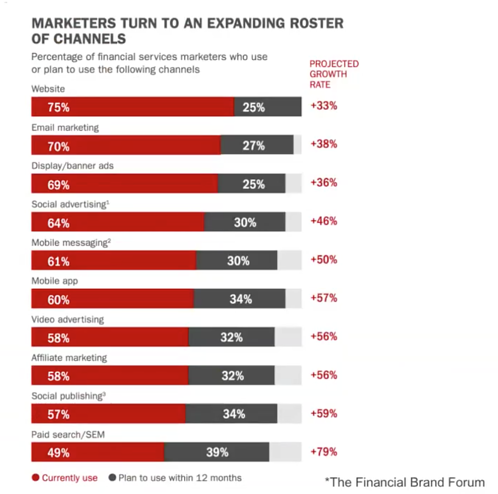It’s a paradox worthy of a Shakespeare play: Marketers know how to sell the value of products but oftentimes not of their own marketing.
This can be true for marketing departments across industries, but it's an especially common problem for community banks and credit unions. With a limited budget and team members wearing many hats, resources are usually dedicated to running campaigns rather than analyzing their effectiveness.
Financial marketers must prove their business value with ROI.
There's no doubt that your institution has growth goals for the year. Yet when it comes to ways to achieve those goals, many community financial institutions are stuck playing a guessing game.
According to The Fournaise Marketing Group, 80% of CEOs don’t trust or are unimpressed with their CMOs unless they’re providing metrics around ROI (return on investment). But that's easier said than done without the right technology and data infrastructure, and many marketers are unable to confidently communicate marketing results to their C-suite.
Today's consumer journey spans multiple channels.
Remember the days when you ran one newspaper ad at a time? And you knew it worked because consumers would come into the branch to ask about that new special? Well, those days are gone. The modern consumer’s journey from awareness to conversion is a lot more complicated.

Today's consumer journey is multi-device, multi-channel, online, offline, and back online again.
With digital avenues like email and paid ads in play, tracking should be simple. The problem? Very few consumers follow a single digital channel all the way to account opening. According to our B2C marketing experts, people are using 7+ types of media channels, and it often takes 11 impressions from your brand before someone decides to convert.

The Financial Brand’s survey above found that institutions across the board are using or are planning to use multi-channel marketing.
There is a silver lining. Consumers expect personalization from marketing and are willing to exchange data in order to receive it. That data can provide more opportunities to target your marketing to the right consumers, through the right channels. If you can capture it in a meaningful way.
Gold doesn’t always glitter.
Data may not be pretty, but it’s become the single most important thing any community financial institution can focus on when it comes to their marketing. (Yes, even more than a clever turn of phrase.) The best creative in the world won’t do much if it’s on the wrong channels or in front of the wrong audience.
As a community financial institution with a limited budget, it can feel risky to invest in data. What dollars you do have often go directly into media buys to see the most immediate value. But this creates a catch-22: in order to avoid risk and focus on “what works”, investments are made into channels that may or may not actually be working. And you can’t find what’s really working since you never made an investment into the technology and data that could provide accurate ROI measurements.
Effective marketers across all industries have to evolve from seeing marketing as a few simple categories (branding, creative, and media) to what it is now — a highly scientific, data-driven discipline. And their Boards, CEOs, and CFOs must allocate budgets accordingly to provide marketers the tools they need to make holistic strategy improvements.
...if you can't walk, then crawl.
Although it is the ideal way to evaluate marketing success, most community banks and credit unions are not currently in the position to measure ROI themselves. But it’s vital that you’re measuring something. Here’s how many community financial institutions we’ve talked to are getting around the ROI hurdle to evaluate their marketing’s success:
-
Lift measurement: When running a campaign, check to see if new accounts have been opened during that time period.
-
List-based attribution: Compare the consumers you’re targeting in your marketing to new account holders and see if they match up.
-
Maintain an accurate measurement of organic traffic to your website to track if your brand is becoming more powerful with increased organic traffic over time.
-
Use account holder surveys to track marketing success. Some institutions require consumers to answer where they’ve heard about specific promotions when calling into a branch.
-
Experiment by adding new channels one at a time. The important thing is to keep measuring and making optimizations as you go.
By beginning to track this type of data, known as lagging indicators, you’ll have the first building blocks to creating a better marketing strategy.
Find a partner who can help.
You don’t have to go about measuring your marketing alone. At Kasasa, we use Optimized, Results-Based (ORB) marketing to not only automate multi-channel marketing programs for our clients but also continuously measure their success and optimize accordingly. Through ORB, we’ve seen a 250% average ROI for programs running longer than three months.*
There’s no way around it. Measuring your marketing value takes time, resources, and money. Though challenging for community financial institutions to measure for these reasons, ROI can help you make better decisions about where to allocate your future investments — and it’s your best bet for improving your institution's marketing strategy.
Looking for more information on how to track marketing success? Check out this episode of our podcast, Thinking Outside the Vault, where our VP of B2C Marketing discusses attribution models, technology, and more.
*Kasasa Analytics



